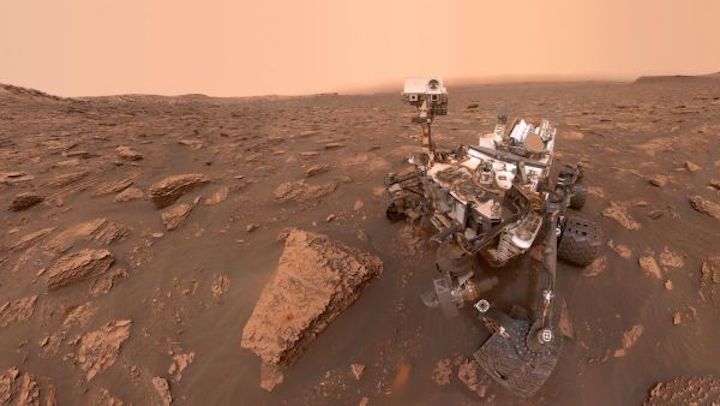18.07.2021
The methane is likely to have been produced recently

NASA's Curiosity rover took this selfie while inside Mars' Gale crater on June 15, 2018, which was the 2,082nd Martian day, or sol, of the rover's mission. (Image credit: NASA/JPL-Caltech/MSSS)
A group of scientists may have just pinpointed the location on Mars of a mysterious source of methane, a gas most often produced by microbes — and NASA's Curiosity rover could be right on top of it.
Methane blips have pinged on Curiosity's detection systems six times since the rover landed in Mars' Gale crater in 2012, but scientists weren't able to find a source for them. Now, with a new analysis, researchers may have traced the methane burps to their origin.
To calculate the unknown methane source, researchers at the California Institute of Technology modeled the methane gas particles by splitting them into discrete packets. Taking into account the wind speed and direction at the time of their detection, the team traced their parcels of methane back through time to their possible points of emission. By doing this for all of the different detection spikes, they were able to triangulate regions where the methane source is most likely located — with one being just a few dozen miles away from the rover.
"[The findings] point to an active emission region to the west and the southwest of the Curiosity rover on the northwestern crater floor," the researchers wrote in their paper. "This may invoke a coincidence that we selected a landing site for Curiosity that is located next to an active methane emission site."
This prospect is thrilling for scientists, as almost all of the methane in Earth'satmosphere has biological origins, according to the researchers, so that a signature on Mars could be a key signpost for finding life on the ostensibly desolate planet.
Even if the methane is being produced by non-biological processes, it could point to geological activity closely tied to the presence of liquid water — a vital ingredient for past or present life to thrive.
Curiosity detected the methane blips through an instrument called the Tunable Laser Spectrometer, which is capable of detecting trace quantities of the gas at less than one-half part per billion (ppb), or about the quantity of a pinch of salt dropped into an Olympic-size swimming pool. The methane spikes that led the team to the potential source were registered at roughly 10 ppb.
Previous attempts to cross-check Curiosity's methane spikes with atmospheric methane levels detectedby the European Space Agency's Trace Gas Orbiter (TGO) have failed. This could either mean that there is methane in the Martian atmosphere and the TGO somehow isn't picking it up, or there isn't any atmospheric methane on Mars and Curiosity is parked right on top of a local source.
“It's possible that the methane could be leaking out from somewhere underneath Mars' surface.
"It’s a bit of a haystack," John Moores a professor of planetary science at York University in Toronto, Canada, told New Scientist. "It could be covered by dust and be almost impossible to find."
Though we still don't know whether the methane comes from tiny lifeforms, the detectable life span of methane is only 330 years, after this it is completely destroyed by exposure to sunlight. That means whatever produced the methane could be still producing it today. Scientists' next job will be to find out what that something is.
The researchers published their findings June 3 on the preprint server Research Square, so their study has yet to be peer-reviewed.
Quelle: SC

